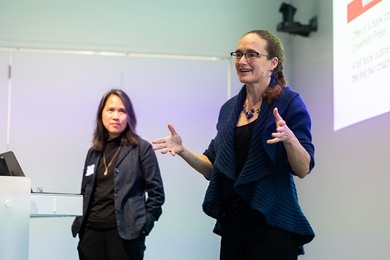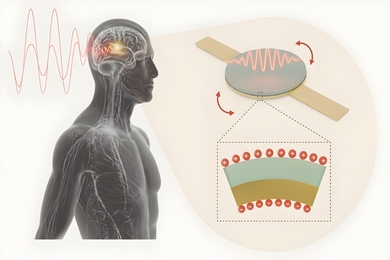Dr. Patrick M. Hurley, professor emeritus of geology and geochemistry and recipient of the Walter H. Bucher Award for his life's work from the American Geophysical Union, died on October 21 in Mt. Dora, FL. He was 88.
Professor Hurley's field was applying natural radioactivity to determine the age of rocks in the Earth's crust, leading to an understanding of the assemblage of the basement rocks in the various continents. From this base, he worked on the growth of the continental masses, continental drift and early studies in plate tectonics.
His Laboratory for Geochronology at MIT was supported by the Atomic Energy Commission for many years, and subsequently by Office of Naval Research and the National Science Foundation. Most of the lab's work investigated the growth of radiogenic isotopes in mineral systems containing radioactive parents, principally the pairs rubidium-strontium, uranium-lead and potassium-argon. Measurements required solid-source mass spectrometry for the most part, utilizing laboratory-designed mass spectrometers prior to the availability of commercial instruments. In addition, the overall growth of radiogenic strontium-87 in crustal materials was used as a measure of the time-scale and extent of the geochemical differentiation of the Earth's crust from the deep interior.
Rock samples to be dated were collected from key assemblages in many parts of the free world, and included samples returned from the moon.
Dr. Hurley was the author of two books: How Old is the Earth? (Doubleday), translated into 11 languages, and Living with Nuclear Radiation (University of Michigan Press). He was also the editor of a McGraw-Hill series of paperbacks, and on the editorial board of Precambrian Research, Earth and Planetary Science Letters, and Geochemica Acta. He served as president of the Geochemical Society and chairman of the Tectonophysics Section of the American Geophysical Union. He was a Fellow of the American Academy of Arts and Sciences, the American Geophysical Union, the Geological Society of America and the American Association for the Advancement of Science, and an Honorary Fellow of the Geological Society (London).
At MIT, Professor Hurley taught subjects in geochemistry, geochemical thermodynamics, mineral deposits and geochronology. He served as faculty chair and president of the Faculty Club, and also chaired the Committees on Educational Policy and the First Two Years, as well as several of the standing committees. He chaired the search committee for a new president, leading to the installation of President Wiesner and Chancellor Paul Gray. Professor Hurley retired from the faculty in 1977.
Patrick Mason Hurley was born in Hong Kong in 1912 and moved to Victoria, British Columbia in 1921. He received the BA and BAS degrees in mining engineering from Victoria College and the University of British Columbia in 1934. He received a Royal Society of Canada Fellowship to attend graduate school at MIT and completed his doctorate in 1940. He was a research associate at MIT and the University of Wisconsin briefly before joining the Institute faculty in 1946. He became an associate professor in 1951 and a full professor in 1953, serving as executive officer in the department from 1950-61.
Dr. Hurley married Margaret Macurda in 1941, and they had three children: David, Peter (SB 1968) and Pamela (SB 1977). Since his retirement, the Hurleys have lived on Marco Island, FL; New London, NH; and Mt. Dora, FL. He is also survived by a sister, Isobel Reuter of Cleveland.
A version of this article appeared in MIT Tech Talk on November 1, 2000.






